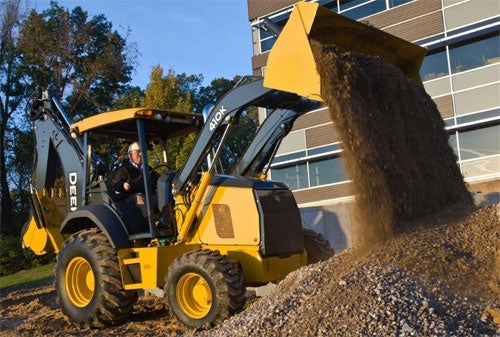
John Deere has introduced its K-Series Backhoe Loaders, eight models (310K EP, 310K, 310SK, 310SK TC, 315SK, 410K, 410K TC, 710K) designed to build on the success of the popular J-Series. Two economical tractor loader models (210K EP, 210K) round out the K-Series.
“Our customers are a diverse group that use backhoe loaders and tractor loaders for a variety of applications on the jobsite,” says Louann Hausner, product marketing manager for backhoe loaders, John Deere Construction & Forestry. “The new K-Series provides North American contractors a variety of options that are powerful, versatile, productive and economical. John Deere is committed to matching the right machine to the right customer.”
According to John Deere, the new K-Series meets today’s emission regulations. Powered by a certified IT4/ Stage III B John Deere PowerTech engine, the K-Series comes equipped with a five-speed transmission that allows top speeds of 25 mph when roading. An optional AutoShift transmission is designed to enable smooth shifting and improve operator comfort by reducing the number of times the Transmission Control Lever (TCL) needs to be actuated during operation. A single loader lever with integrated electro-hydraulic (EH) auxiliary loader control eliminates the need for a second lever when using a multi-purpose bucket. In addition, a complete redesign of the cab ventilation now circulates cab air from front-to-back, directing airflow where operators need it the most.
Enhancements were also made to John Deere’s Total Machine Control (TMC) backhoes. Updates include a joystick redesign that gives operators even easier operation with equal lever efforts in all directions for smooth and productive operation as well as improved swing control that allows for more precise trench work with less backhoe wag.
The 210K EP and 310K EP are two new models designed specifically for rental and large contractor customers that need reliable, easy-to-use power. The EP models provide a 70 hp engine with IT4 power without needing any aftertreatment technology. This eliminates the need for additional operator training or extra monitoring of machines that have numerous operators focused primarily on quickly getting on and off a machine to get a job done.
 Your Privacy Choices
Your Privacy Choices